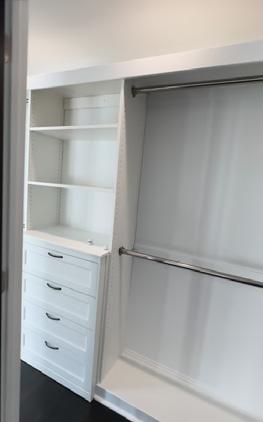


































































This stunning 6-bedroom, 4.5-bath, 6,100 SqFt ranch-style home, built in 2001, offers breathtaking water views and a flexible floor plan, perfect for extended family or a home business. Nestled on a picturesque 1.9-acre property, this luxury residence features soaring ceilings, hardwood floors, and an abundance of natural light. The grand entry foyer leads to an open-concept eat-in kitchen with stainless steel appliances, a center island, and Corian countertops, seamlessly flowing into the spacious living room with a gas fireplace. A formal dining room adds elegance, while a private spare room provides versatility as an ideal office or playroom. The master suite is a true retreat, boasting a walk-in closet and a newly renovated spa-like master bath. A loft area serves as a perfect recreation room, exercise room, or guest quarters. Designed for comfort and convenience, this handicapaccessible home features radiant heat, 2-zone central air conditioning, a central vacuum system, and a Generac generator for peace of mind. The huge basement and extensive storage space ensure ample room for all your needs. Outside, a solar-heated gunite inground pool and hot tub create the perfect outdoor oasis, complemented by a charming front porch and a circular driveway leading to a 3-car attached garage with 300-amp service. With breathtaking views, modern amenities, and an unbeatable location by the water, this exceptional home is a rare find.

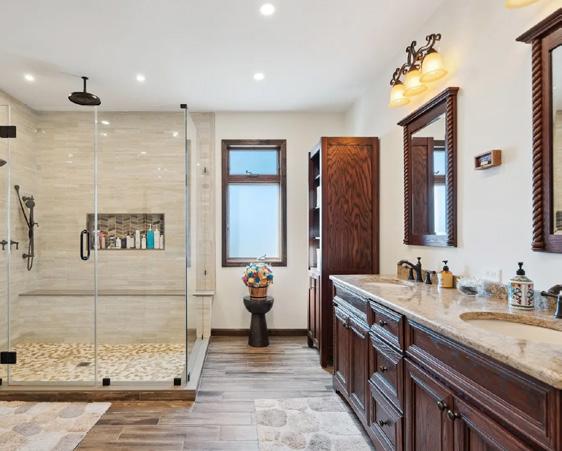




The birds are chirping, the sun is shining and people are starting to have a spring in their step again! Spring is almost here and this time of year many of us think about sprucing up our homes and dreaming of those lazy summer days. Flip through this issue to find information home improvement editorial throughout, along with local features and much more. Looking to advertise? Seasons Magazine is published monothly in print and online. Contact us for more information today!
























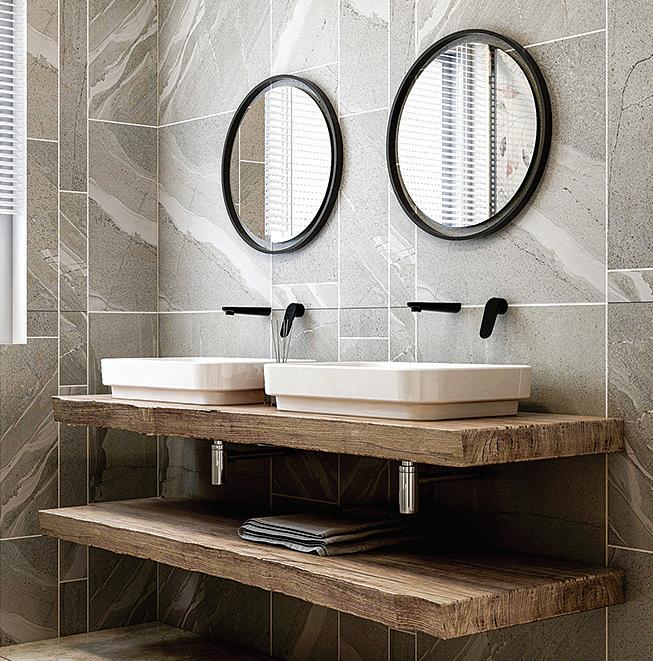
• Soaking tub: Although the majority of people shower as part of their daily hygiene routine, a deep soaking tub separate from the shower is ideal for those who enjoy a good bath.
• Luxury mirror: Upgrading the bathroom mirror to one that offers features like defoggers, integrated lighting and a dimmer setting can elevate the bathroom.
• Floating vanity: A floating vanity is mounted directly to the wall to leave space underneath. Better Homes & Gardens says a floating vanity can lend an airy feel to a bathroom.
• Frameless shower: A frameless (glass) shower door is not only luxurious but also functional for people who want to age in place. With no edge or lip to step over to enter the shower, anyone with mobility challenges can walk into a frameless shower safely.
• Water closet: If space allows, separating the toilet in a water closet from the rest of the bathroom space affords even more privacy. Plus, in couple’s bathrooms, a water closet enables two to use the bathroom at the same time for different functions.
• Walk-in-closet: Relocating the bedroom closet to right off the owner’s bathroom affords an immediate opportunity to dress comfortably, thus streamlining a morning routine.
Bathroom renovations are worthwhile investments. Choosing some unique upgrades can enhance the design and function of these important spaces.
Kitchensand bathrooms are two popular areas to address when renovating a home. Modernize Home Services says 26 percent of sellers make bathroom improvements to their homes before listing. Midscale bath remodels will net a return on investment of about 64 percent, while a luxury bathroom overhaul has an ROI of about 57 percent.
When considering bathroom renovations, homeowners may want to include some unique features that can add style and function, not to mention some much-deserved luxury. With that in mind, the following are some luxurious features to consider.
• Heated floors: There is something to be said for stepping out of the shower and being met with warmth underfoot. Heated floors are not just for people who live in cold climates, either. When the air conditioning is pumping on hot days, tile floors can feel chilly. Heated floors also are aesthetically appealing because homeowners don’t have to factor in baseboard heaters or forced-air vents.
• Steam showers: There are many different steam showers on the market, and each can turn regular showers into steamy spa-like enclaves. A steam shower is similar to a sauna and utilizes a steam generator to produce steam in a single area, advises Badeloft® Luxury Bathrooms.










Notwo homeowners are the same, and that's perhaps most evident in the design decisions individuals make when decorating their homes. Flooring is among the first things a person notices when entering a home, and the array of options consumers have when choosing flooring materials underscores how unique each homeowner is.
Carpeting is a popular flooring option. Many homeowners prefer carpeting because they feel it helps to create a cozy, welcoming
vibe in a home. Consumers considering carpet for their homes may have some common questions, and answers to those inquiries can help homeowners determine if carpeting is for them.
Is carpeting expensive?
Home renovations are expensive, and the cost of a project is often the first question homeowners have. The cost of carpeting varies widely and is contingent on an array of variables unique to each home and homeowner, including square
The home renovation experts at Angi.com note that some carpet fibers are better suited to areas in a home that attract a lot of foot traffic, while others make for better options in areas with less use, such as a bedroom or home office. For example, Angi.com notes that polyester has a luxurious, soft feel, making it a strong option for bedroom floors. Nylon carpet fiber is resistant to stains and damage and maintains its height under heavy weight, making this a good option in heavily trafficked rooms. Homeowners can discuss each carpeting material with their flooring retailer to determine which suits their budget and which is best in each room of their homes.
Is carpet padding a must?
footage, materials chosen by the homeowner and the cost of labor associated with installation, which can vary significantly between locations. According to the online renovation resource HomeAdvisor, the average cost to install or replace carpet is between $782 and $2,812. That wide range illustrates how much the cost of the project will be affected by variables unique to each project. However, even homeowners who come in around or above the high end of that estimate may find carpet installation is among the more affordable ways to give the interior of a home an entirely new look and feel.
How different are carpeting materials?
Carpeting materials differ in their look, feel and function.
Carpet padding is one of the costs associated with carpeting. When shopping for carpeting for the first time, homeowners may notice carpet padding costs on their estimate and wonder what it is and if it's truly necessary. Carpet padding is necessary, as Flooring101.com notes that it keeps the underside of the carpet from wearing against the subfloor while absorbing the impact of foot traffic and furniture. That absorption helps to reduce stress on the carpet and thus extend its life expectancy. Carpet padding also can have an insulating effect and help to reduce sound in a room. So while carpet padding might be a costly expense on an itemized estimate, it's well worth the investment.
Carpeting can help make a home feel more cozy and welcoming. Homeowners can work with a local carpeting retailer to find a carpet that meets their needs and fits their budget.
































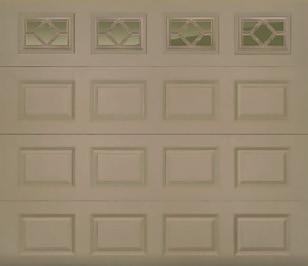













































Wood could be having a moment among modern home buyers. According to the real estate experts at Zillow, the term “cozy” appeared in 35 percent more real estate listings in 2024 than in 2023. Though various components can help to create a cozy vibe inside a home, wood has long been a go-to material when interior designers attempt to add warmth to a property. The home renovation experts at Houzz also cite wood infused architectural warmth among its 10 most popular home trends in the coming year. Homeowners who want to capitalize on this trend before putting their homes on the market or those who simply love the idea of adding more woodbased warmth in their homes can consider installing ceiling beams, wood wall paneling or even wood trim throughout their homes.










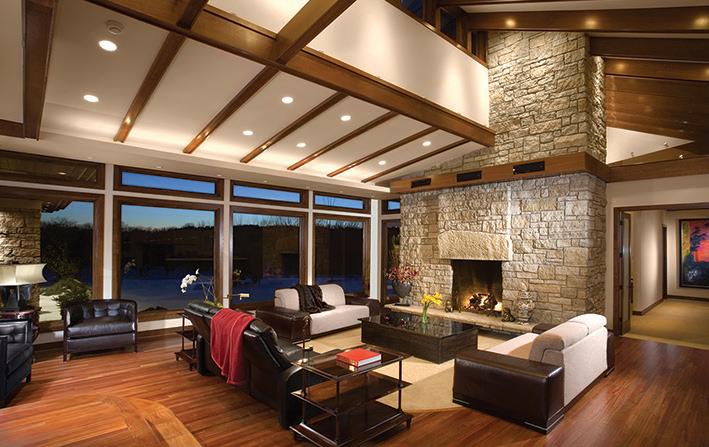
Trendsthat seem ubiquitous one day can seemingly vanish before the sun rises again just 24 hours later. That's especially true in the digital age, when overnight celebrities and viral videos can be on the tips of everyone's tongue before being forgotten entirely when the next online sensation emerges in an increasingly rapid news cycle. Home trends typically benefit from a longer shelf life than viral videos and other fads that originate on the internet, and that's something renovationminded homeowners should consider when improving their homes. Homeowners preparing to do just that can consider these notable trends, which the online renovation experts at Houzz suggest will be particularly popular in the year ahead.
· Rounded furnishings: Houzz noted that gentle curves and rounded edges embody the organic modern styles that many current homeowners love. Rounded dining tables and similarly circular coffee tables may merit consideration among homeowners who want to embrace popular trends.
· Arches: Houzz cites arches among the more popular modern trends, and the
experts at Better Homes & Gardens note this unique, eye-catching style has been gaining popularity for several years. Better Homes & Gardens suggests that part of the appeal of arched doorways could be their deviation from a more traditional door shape. That uniqueness draws the attention of residents and visitors alike, and Houzz notes that arched windows, cabinets and even millwork details are part of the pivot toward arches.
· Stove alcoves: If it's a touch of history homeowners want, kitchen range alcoves might be just the project for them. Range alcoves call an earlier time to mind when wood burning stoves were commonplace. The report from Houzz notes range alcoves immediately draw attention, which undoubtedly adds to their appeal.
· Wood for warmth: Homeowners who hear "wood and warmth" might think fireplaces, but Houzz reports that wood elements are being incorporated into interior designs as a means to giving homes a more cozy vibe. Ceiling beams, trim, wall paneling, and cabinetry are utilizing wood to add warmth to a home.
There’s

much to celebrate on the Spring Equinox, which is also referred to as the “Vernal Equinox” or the “March Equinox” and marks the official beginning of spring, a season many people associate with rejuvenation and longer hours of daylight. One unusual aspect of the equinoxes (the Autumnal Equinox in September ushers in the beginning of fall) is these days feature the fastest sunsets and sunrises of the year. According to Earthsky.org, this phenomenon occurs because the sun rises due east and sets due west on the equinoxes, which means the setting sun hits the horizon at its steepest possible angle. That steep angle leads to a very short sunrise and sunset on the equinoxes. Traditionally, we celebrate the first day of spring on March 21, but astronomers and calendar manufacturers alike now say that the spring season starts on March 20 in all time zones in North America.
feature prominently in the legend of St. Patrick, whose feast day is celebrated every year on March 17. As the legend goes, St. Patrick drove all snakes from Ireland. But scientists and historians note that St. Patrick, who lived in the mid-fifth to early-sixth century, likely came along too late to accomplish such a feat, as evidence suggests post glacial Ireland never had any snakes. Indeed, the ocean waters surrounding the Emerald Isle are too cold to enable the migration of snakes from other locales, which suggests the snakes in the legend of St. Patrick are symbols and not meant to represent reptiles.








































St. Patrick’s Day is a time to pay homage to Ireland’s patron saint and celebrate Irish culture and cuisine. Even though corned beef and cabbage is ubiquitous on this holiday, that meal really isn’t the most authentic Irish cuisine. There are plenty of other foods to dress the St. Patrick’s table if a person wants to dabble in Irish cooking. Many cultures have a variation on the potato pancake, and the Irish are no different. Boxty is a traditional Irish potato pancake. Individuals who want to include boxty in their celebrations can try this recipe, courtesy of Chef Pádraic Óg Gallagher of Gallagher’s Boxty House in Dublin.
Irish Boxty
Makes about 10
300 grams (approx. 10 1⁄2 ounces) raw potatoes, peeled
300 grams (approx. 10 1⁄2 ounces) cooked potatoes, mashed
300 grams (approx. 10 1⁄2 ounces) flour
10 grams (approx. 2 1⁄2 teaspoons) salt
850 ml (approx. 3 1⁄2 cups) milk


1. Grate the raw potatoes into a muslin cloth and squeeze as much liquid as possible into a bowl. Let liquid stand for 20 minutes.
2. Gently pour off the liquid and keep the starch that settled in the bottom of the bowl.
3. Add grated potatoes to mashed potatoes and flour. Add starch and salt to mix.
4. Slowly add 3⁄4 of the milk to form a batter of pouring consistency. Depending on the potato, you may not need to use all the milk. If the batter is too heavy, add more milk.
5. Leave batter resting for 30 minutes.
6. Drop a ladle full onto an oiled nonstick pan over medium heat and cook on the first side for 2 minutes (this depends on how heavy the batter is and how much you use). Check color (it should be a nice golden color) on the bottom. Adjust heat if necessary.
7. Turn and cook on the other side for 2 to 3 minutes more.
8. Boxty pancakes are best left overnight in a fridge and reheated in a pan in good butter.



GovernorKathy Hochul recently announced a transformational $150 million investment to connect the Long Island Rail Road’s (LIRR) Ronkonkoma Station with the proposed North Terminal at MacArthur Airport, significantly improving accessibility and enhancing the region’s transportation infrastructure. This initiative builds on the Governor’s commitment to the development of a new terminal at MacArthur Airport, further positioning Long Island as a hub for economic growth and innovation.
“Long Islanders deserve modern, efficient transit systems that make their daily lives easier and fuel local economic growth,” Governor Hochul said. “By improving transit access, redesigning road networks, and enhancing critical infrastructure, we are unlocking new opportunities for businesses, tourism, and economic development. This $150 million investment will also create good-paying union jobs while transforming how Long Islanders connect to one another, to New York and to the rest of the world.”
transit networks, expanding housing access and fostering job creation.
"By improving transit access, redesigning road networks, and enhancing critical infrastructure, we are unlocking new opportunities for businesses, tourism, and economic development," said Governor Hochul.
for generations to come. The additional funding advances Long Island's momentum as a hub for economic growth, expanding opportunities for residents, businesses, and visitors alike."
The new funding further leverages Governor Hochul’s 2022 commitment of $40 million for a new North Terminal at MacArthur Airport. The project will include a pedestrian walkway linking the airport and LIRR station, redesigned road networks and upgrades to various infrastructure. These enhancements will improve passenger experience, reduce travel times and position MacArthur Airport as a key transportation hub for Long Island. MacArthur Airport has long played a vital role in Suffolk County’s transportation system, evolving from a military airfield in 1942 to being recognized as one of the best small airports in America. This latest investment reaffirms the State’s commitment to improving infrastructure and expanding economic opportunities in the region. By improving connectivity and unlocking the potential of 48 acres of land surrounding the station, the project will drive further development and tourism growth. The investment aligns with the Governor’s broader vision for Long Island, which includes strengthening
Islip Town Supervisor Angie Carpenter said, “We would like to acknowledge and thank Governor Hochul for her leadership and commitment to investing in our region. Commercial Development at Ronkonkoma South represents an incredible opportunity for the region and certainly maximizes the potential of our regional airport. With this investment, we are laying the foundation for long-term economic growth, bringing in high-quality jobs, and creating new opportunities for our young professionals to live and work right here in our community. We are also leveraging the investments made in our transportation infrastructure, including the enhancements to the LIRR and the future potential of Amtrak service. With mixed use residential development north of the Ronkonkoma railroad, we have a unique opportunity to create a thriving, connected transportation hub that supports our workforce and strengthens our economy.”
Empire State Development President, CEO and Commissioner Hope Knight said, "This transformative investment demonstrates New York State's commitment to building world-class infrastructure that drives economic growth. The direct connection between MacArthur Airport and the LIRR network will create new opportunities for business development, tourism, and job creation that will benefit Long Island
Empire State Development Board Chairman Kevin Law said, "As a Long Islander, I know firsthand how critical robust transportation infrastructure is to our region's future. This $150 million investment to connect MacArthur Airport with the LIRR's Ronkonkoma Station will catalyze economic development, enhance quality of life, and create new possibilities for sustainable growth. The improved accessibility and modernized transit network will help cement Long Island's continued success as a premier destination to live, work, and do business."
Long Island Rail Road President Rob Free said, “The LIRR is the fastest, safest and most economical way to travel across Long Island and this project is a unique opportunity to help take more cars off the roads,” said LIRR President Rob Free. “Moving MacArthur’s terminal closer to Ronkonkoma station will encourage people to take the train to the airport. The LIRR is already the best travel experience to JFK and we are ready to help MacArthur Airport grow by bringing that same great travel experience there too.”
Suffolk County Executive Ed Romaine said, “I thank Governor Hochul for recognizing the critically important need for infrastructure investment to help grow Suffolk County’s economy and protect its environment. Without these investments Suffolk County cannot grow to accommodate new businesses or create new opportunities for residents or improve transportation. This is a great win for the people of Suffolk County."
“What I discovered at Woodloch is what I want for my own family, and why we keep coming back, it’s that magic of together.”
- Meaghan MurphyAuthor, Editor, Woodloch Ambassador



















WATCH MEAGHAN’S #MYWOODLOCHSTORY scan here with your phone

For 65 years we have been changing the lives of our guests through experiential satisfaction, wholesome homegrown activities, and family-focused traditions. One of our greatest strengths lies in the ability to help guests foster a healthier holistic mindset. We’ve seen it, day after day, as guests check in and then check out, their demeanor is uplifted, their spirits brighter, and their hugs with their kids are a little bit tighter.

• Consider planting vegetables in the spring. Various garden experts note that spring is an ideal time to plant a vegetable garden. If planted at the right time, a vegetable garden can save homeowners money on their grocery bills and provide a season’s worth of fresh veggies. Lettuce and spinach are sunand shade-friendly vegetables, which can make them good options for a spring garden. Cool season root vegetables, which include beets, carrots and swiss chard, are some other notable veggies that can thrive in early spring.
Manypeople view spring as a season of rejuvenation. That renewal may be somewhat metaphorical for human beings, but it’s literal for lawns and gardens that begin to grow anew as temperatures rise and hours of daylight increase in spring. Each spring presents an opportunity for homeowners to get back outside and tend to their gardens. As the temperatures rise, homeowners can consider these spring planning pointers to ensure their landscapes look lush and full in the months ahead.
• Start with the soil. Soil can serve as the starting point each spring. Winter can take its toll on a garden and even overwhelm the area with debris over the colder months. Clear rocks and other debris from the area before loosening the soil. The Farmer’s Almanac recommends loosening soil to a depth of at least eight inches if planting a new garden. An existing garden may only need to be loosened to a depth of around six inches, after which homeowners can mix compost into the soil in early spring. Compost is organic matter that provides nutrients and helps to build strong plant roots.
• Consider a raised garden in colder climates. The Farmer’s Almanac notes raised gardens can help homeowners in colder climates dry out and warm up wet, cold soils more quickly. Homeowners in such regions also can cover their beds with black plastic or cardboard prior to planting. Doing so can protect the beds from late season snow and spring rains and also helps to overcome erosion.
• Take soil temperatures. Unpredictable weather is among the noticeable effects of climate change in recent years. That lack of predictability can make spring planting a little more tricky than it once was. Experts note that soil temperatures around 50 F are best for cool season crops, while soil should be 60 F or warmer when planting warm weather plants such as tomatoes.
• Work with a garden center to identify what to plant. The right plants for one region may not be ideal for another, so homeowners are urged to work with a local landscaper or garden center before planting. Such a consultation can be especially useful for homeowners planting a new garden. Landscapers and garden center professionals will know which plants work in the local climate.
Newgrowth is a hallmark of spring, whether it plays out in the birth of birds and bunnies or with the returned buds on trees and plant stalks. While most greenery rebounds naturally, lawns may need a little extra TLC in order to return to their once lush, green glory. Revitalizing a lawn in spring is a multifaceted process but can be well worth the reward when green grass adds to a beautiful landscape and functional yard. Here is how to get started when the weather warms, courtesy of The Farmer's Almanac and The Home Depot.
• Clean up debris. Spend a few hours raking up leaves from the lawn and removing any other winter debris like twigs so that air can reach the grass below. Also remove any thatch that has developed.
• Test the soil. Take a sample of the soil to determine its pH level and nutrient needs. Then you can make adjustments to set a strong foundation for the lawn to grow.
• Do some weeding. Pull out any weeds that have poked through early on and apply a pre-emergent herbicide to prevent additional weeds from taking over.
• Start the aeration process. A core aerator punches holes into the soil. This enables air and water to penetrate through to the roots.
• Overseed the lawn. Apply grass seeds over the lawn, paying special attention to any bare or thin areas so that the seed will fill in the lawn.
• Water consistently. It is important to water the lawn deeply and consistently, especially when the weather is dry, to help promote strong root development.
• Time fertilizer correctly. Apply a spring fertilizer around three weeks after the lawn starts to turn green or after the first two or three mowings. If fertilizer is applied too early it can feed weeds instead of the grass and result in fertilizer runoff.
• Mow to an appropriate height. Begin to mow when the ground is dry enough and the grass is long enough to need cutting. Leave some length to the lawn; otherwise, sunlight will reach the soil and encourage weed seeds to germinate.




Homefor most people is a sanctuary that offers comfort, familiarity and a place to gather with family and friends. Although home can be a welcoming place, with so many people in the average household humming along from day to day, it may not always be the most serene setting.
From teenagers playing video games to video meetings in a home office to dogs barking at the postal worker doing daily rounds, there are plenty of potentially distracting sounds in and around a home. Lawn care workers with their mowers and blowers also may contribute to ambient noise. A dedicated quiet room can be beneficial for anyone, and most especially for people who experience sensory issues.
A quiet room is a space where a person can enjoy peace and quiet in a distraction-free environment. According to designer Rachel Cannon, "a quiet room is a sanctuary from the stimulation and overwhelm that we encounter every day." A quiet room may go by various names, including a mindfulness room or cozy cove, but the common goal is to remove as many sensory distractions as possible so that an individual can disconnect from the outside world and reap some calming benefits. According to School Specialty, LLC, an education resource provider, schools are now providing quiet rooms for over stimulated students, and homeowners can take similar cues to create these relaxing retreats at home.
The first step in establishing a quiet room is to identify a location that is far away from the main action of the household. A bedroom, basement, nook in the garage, or even an attic can be a good spot for a quiet room.
Soundproofing the space can make it even more inviting. Sounds will bounce off of walls and floors, but acoustic panels can help muffle noises. If acoustic panels are not in the design plan, thicker draperies, wallpaper, carpeting, and wall art can help counteract echoes and noise infiltration. Soft furniture also can absorb sound.
Small rooms work better as quiet spaces, as such areas can feel more cozy. Less is needed to decorate the space if it is on the smaller side. Bring in warm, soft lighting and soft decor. A sound machine playing favorite ocean or natural sounds also can mask outside noises even more.
Establish rules that govern how the quiet space is to be used. When someone is inside the area, they should not be disturbed. If possible, use the quiet room during naturally quiet times of the day. Keep the room stocked with books, journals, crafting items, or whatever it is you need to unwind and relax.
Quiet rooms can be special retreats homeowners use to escape the hustle and bustle of a household.























